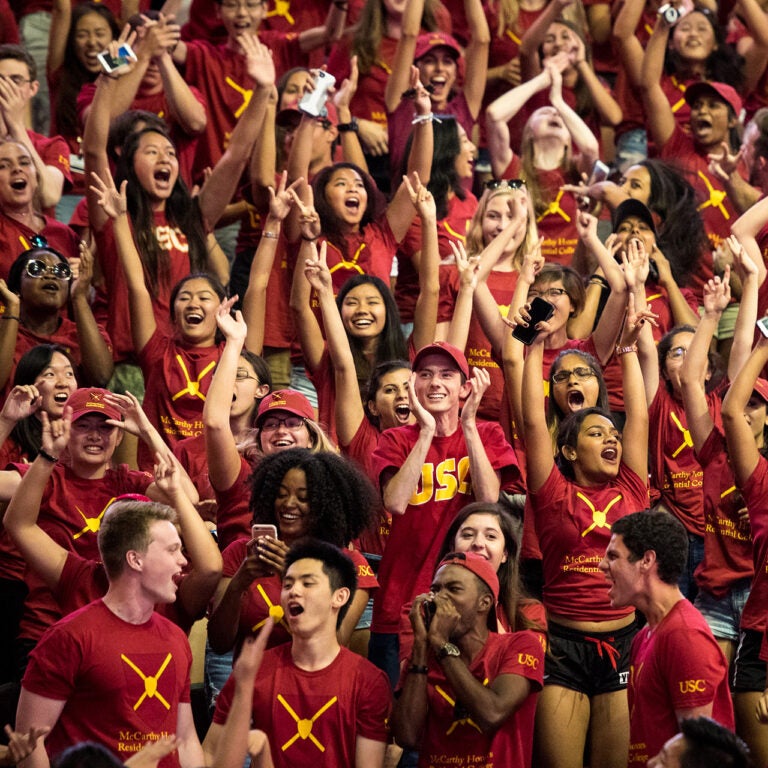2019
The new Iovine and Young Hall opens. Endowed in 2013, the USC Jimmy Iovine and Andre Young Academy blends design, business, and technology to empower the next generation of creative innovators and entrepreneurs.
2018
Marvel’s Black Panther is released. Directed by USC alumnus Ryan Coogler MFA ’11, the film becomes the first superhero film nominated for Best Picture at the Academy Awards, breaking industry norms on diversity and representation.
2018
USC Dornsife Center for the Political Future launches, fostering bipartisan dialogue, leadership development, and research on pressing political issues.
2017
USC Village opens to the Trojan Family with fanfare, streamers, and a new university icon—Hecuba, Tommy Trojan’s counterpart. It’s the largest mixed-use development project in the history of South Los Angeles and includes restaurants, retailers, and residential colleges.
2016
A gift from Larry Ellison establishes the Lawrence J. Ellison Institute for Transformative Medicine of USC, which houses interdisciplinary research advancing the sole goal of curing cancer
2016
At 96, World War II veteran Alfonso Gonzales receives his degree in zoology, becoming the oldest graduate in USC history.
2016
USC’s Neighborhood Academic Initiative (NAI)—a college access and success program for children from neighborhoods close to USC—celebrates 25 years. NAI is later named the USC Leslie and William McMorrow Neighborhood Academic Initiative.
2016
Forty-four Trojans participate in the Rio de Janeiro Olympics, more than any other American university, and bring home 21 medals.
2015
Japanese Prime Minister and Trojan Shinzo Abe visits USC.
2014
USC Men’s Tennis team wins the 21st national championship in the history of the program; this also marks the university’s 100th national championship.
2012
After the London Games, Trojans bring home 25 Olympic medals, including 12 golds, solidifying USC’s long Olympic heritage.
2012
USC adds its sixth arts school, the USC Glorya Kaufman School of Dance.
2011
USC names its academic medical enterprise the Keck Medicine of USC.
2011
USC names the Sol Price School of Public Policy.
2011
USC alumnus Will Ferrell ’90 receives the prestigious Mark Twain Prize for American Humor, highlighting his impact on American comedy.
2011
USC names its oldest, largest, and most diverse academic unit the USC Dana and David Dornsife College of Letters, Arts and Sciences.
2010
President Barack Obama visits the USC University Park Campus, delivering a speech in front of Doheny Memorial Library to an estimated crowd of 37,500 people, emphasizing the importance of civic engagement ahead of the midterm elections.
